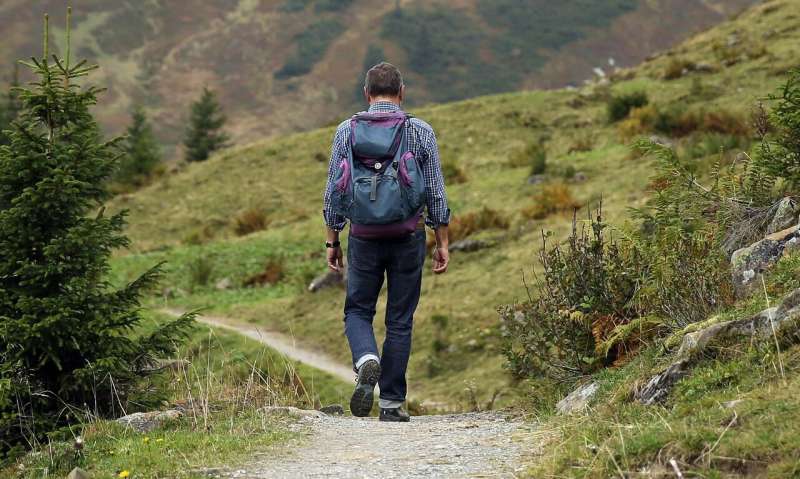Human hiking trails custom built for sauntering grizzlies

In the run up to hibernation, grizzly bears go on a colossal binge, consuming as many calories as possible to get them through the long winter. Yet, little was known about how much energy the massive mammals use as they shamble around their rugged territories. "Moving across the landscape in search of food can be a huge energetic expense for some animals," Carnahan says. Fortunately, the Washington State University Bear Research, Education and Conservation Center (WSU BREC), where Carnahan is based, is home to 11 bears, including four that formerly lived in Yellowstone National Park, so he and Charles Robbins (also at WSU BREC) decided to measure the animals' metabolic rates as they sauntered on the flat, and up and down gradients to find out how much energy they use on a daily basis. The team publishes their discovery that grizzly bears prefer to walk on shallow paths to save energy in Journal of Experimental Biology, explaining why the animals often appear on human hiking trails.
"Grizzly bears are amazing animals to work with," says Carnahan. "As long as you respect what they're capable of, don't surprise them and give them space, they're actually pretty predictable," he explains. Engineers at the WSU BREC constructed a bespoke enclosure from steel and polycarbonate sheets to keep the bears secure while the team measured their oxygen consumption as the animals sauntered on a horse treadmill. Then, the researchers jacked up one end of the treadmill on blocks to simulate the grizzlies ascending and descending a slope. Fortunately, the bears were contented to keep walking, so long as someone continually delivered apple slices to them through a slot in the bear-proof walls. "The most stressful part of rewarding them was ensuring that the apple slice didn't fall resulting in the bear turning around on the treadmill to go after it," chuckles Carnahan.
After months of patiently measuring the bears' oxygen consumption at speeds ranging from 0.4 to 1.3m/s on the level and gradients up to 20deg to calculate how much energy they used, it was clear that ascending and descending the slopes was quite costly, although the bears used less energy bowling downhill at higher speeds. Most surprisingly, the bears didn't seem to have much spare gas in the tank to maintain long high-speed pursuits. They consume similar amounts of energy to climbing humans, wolves and wild cats, in contrast to fleeing elk and deer, which use 46% less energy than grizzlies over mountainous terrain.
But how did Carnahan and Robbins' energy consumption measurements shape up in comparison with the movements of wild grizzlies in Yellowstone? Collaborating with Frank van Manen and Mark Haroldson from the Interagency Grizzly Bear Study Team, which has been tracking bears since the 1970s, Carnahan analysed 11 years of GPS traces and calculated that wild bears walk at a natural speed of 0.6m/s, similar to that of humans. It also turned out that grizzlies tend to select flatter paths that wind along shallower gradients (no more than 10%) to save energy, instead of tackling steeper ascents and descents. "The bears did a lot of side-hilling," says Carnahan.
Coincidentally, the bears' preference for shallow gradients is the same as the US National Park service's recommendation for the maximum gradient of trails, which could explain the relatively high number of incidents when backcountry hikers encounter grizzlies. "Our study helps explain why bears would want to use the same types of terrain as us, so it shouldn't be a surprise to see a bear walking on one of "our" trails," says Carnahan. To stay safe, he advises that hikers chat and make other sounds when out in the woods. "If a bear can hear you coming, it can make a choice as to how close it wants to be to you. Chances are, you'll never see that bear," says Carnahan.
More information: Anthony M. Carnahan et al, Quantifying energetic costs and defining energy landscapes experienced by grizzly bears, The Journal of Experimental Biology (2021). DOI: 10.1242/jeb.241083
Journal information: Journal of Experimental Biology
Provided by The Company of Biologists



















